کرس Grinter کی طرف سے, on July 25th, 2011 اس پیر کو میں معمول کے آرکٹینی سے بالکل مختلف چیز کے لیے روانہ ہو رہا ہوں۔ – مائکرو لیپ! یہ ایک Nepticulidae ہے۔, Stigmella diffasciae, اور اس کی پیمائش بہت زیادہ ہوتی ہے۔ 6 ملی میٹر. میں اس کیڑے کو پھیلانے کا کریڈٹ نہیں لے سکتا – میں نے جن تمام نیپٹیکولڈز کی تصویر کشی کی ہے وہ کیلیفورنیا اکیڈمی آف سائنسز سے ہیں اور ڈیو ویگنر نے اس وقت پھیلائی ہیں جب وہ پوسٹ ڈاکٹریٹ کے عہدے پر تھے۔.
کیٹرپلر پتوں کے اوپری حصے میں کان کرتے ہیں۔ سیانوتھس اور صرف کیلیفورنیا میں سیرا نیواڈا کے دامن سے جانا جاتا ہے۔. اگر آپ اتنے مائل ہیں تو شمالی امریکی نسل کی نسل پر نظرثانی آزادانہ ہے۔ یہاں دستیاب ہے (.پی ڈی ایف).
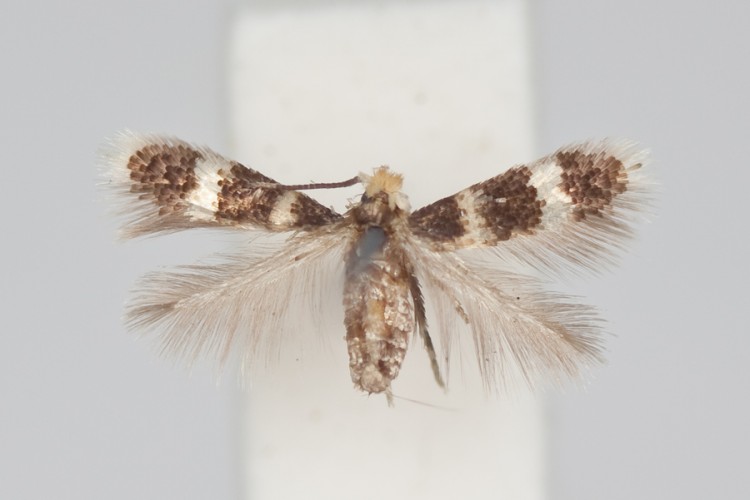 Stigmella diffasciae (Nepticulidae)
کرس Grinter کی طرف سے, جولائی 22nd پر, 2011 It’s been a little while since the last GOP challenge, لیکن this is a softball. I’m hoping they were just too lazy to find a more suitable image…

کرس Grinter کی طرف سے, on July 19th, 2011 What would Jesus do if he had some free time – maybe cure a disease, end a war, or feed the starving – but nah, everyone sees that coming. Why not shock them to the core – burn your face on a Walmart receipt! کم از کم, that’s what a couple in South Carolina believe to have found, a Walmart receipt with Jesus’s face on it. This isn’t exactly new or exciting, humans have a wonderful ability to recognize a face in just about anything. Jesus and other characters “appear” on random things all the time, and even in 2005 a shrine was built to the Virgin Mary around a water stain in a Chicago underpass.
Pareidolia anyone? اصل میں, that face looks pretty convincing, I’m not too sure this wasn’t just faked or “enhanced”. The closeups even look like there are fingerprints all over it. Since I don’t have a walmart anywhere near me or a walmart receipt on hand I can’t determine how sensitive the paper is and how easy it would have been to do – but how long do you think before it shows up on ebay? کسی بھی واقعے میں, it looks much more like James Randi to me than Jesus (at least we actually know what Randi looks like!).
 from CNN
کرس Grinter کی طرف سے, جولائی 18th پر, 2011 زائد Arthropoda پر, ساتھی SFS بلاگر مائیکل Bok کی اپنے کھیت دوست کی ایک تصویر کا اشتراک کیا, سبز درخت میڑک Plugg. My first thought was of a similar tree frog that haunted welcomed me everywhere I went in Santa Rosa National Park, کوسٹا ریکا. کہنے کی ضرورت نہیں, Costa Rica instills a sudden habit of double checking everything you are about to do. This species is known as the milk frog (Phrynohyas venulosa) for their copious amounts of milky white toxic secretions. One of the first stories Dan Janzen told me while while I was with him at Santa Rosa was about this species – and accidentally rubbing his eye after holding it. Thankfully the blindness and burning was only temporary.
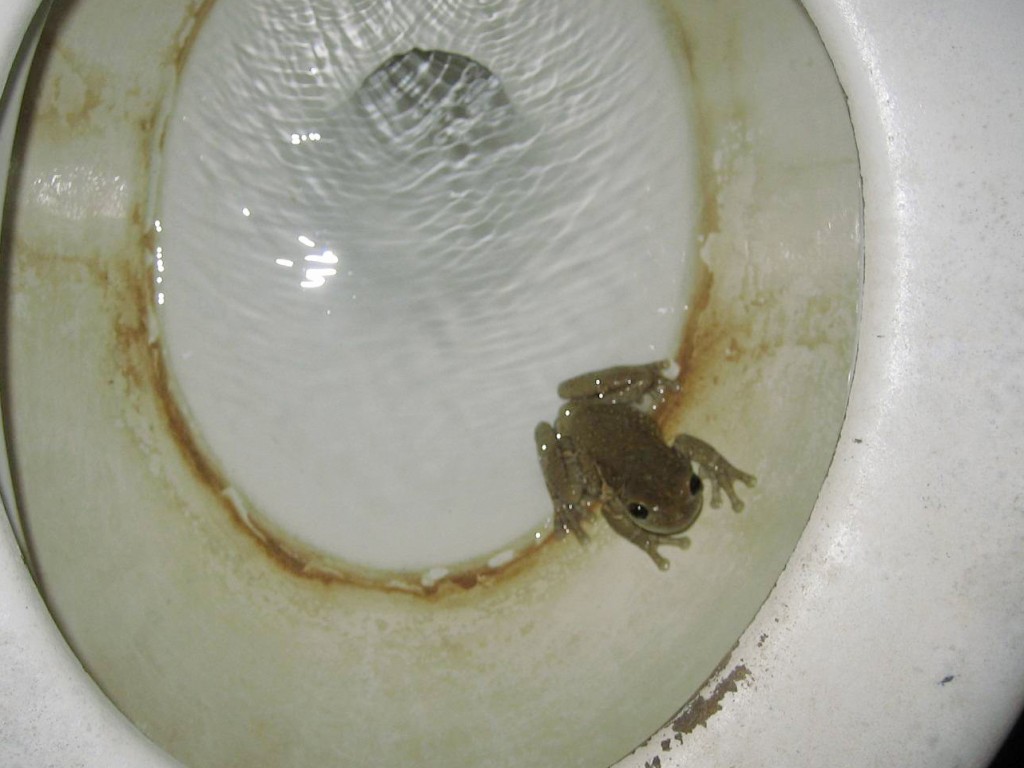 Milk Frog: Phrynohyas venulosa
کرس Grinter کی طرف سے, جولائی 18th پر, 2011 I’ll keep the ball rolling with Arctiinae and post a photo today of Ctenucha brunnea. This moth can be common in tall grasses along beaches from San Francisco to LA – although in recent decades the numbers of this moth have been declining with habitat destruction and the invasion of beach grass (Ammophila arenaria). But anywhere there are stands of giant ryegrass (Leymus condensatus) you should find dozens of these moths flying in the heat of the day or nectaring on toyon.
 Ctenucha brunnea (Erebidae: Arctiinae)
کرس Grinter کی طرف سے, جولائی 12th پر, 2011 آپ اندازہ کر سکتے ساتھ ساتھ مشروط میری عنوان سے پتہ چلتا ہے کے طور پر چونکانے والی نہیں ہے, لیکن میں مدد نہیں کر سکتا لیکن گارڈین کے مضمون سے گھماؤ کرنے. میں نے کچھ اس پار آیا جب میں نے سچ میں سائنسدانوں کا کہنا ہے کہ یہ مزاحیہ جائے “مسحور”, “ہکا بکا رہ گیا”, “حیران”, “حیران”, – میں سمجھتا ہوں کہ کسی اور وقت کے لئے ایک موضوع ہے لگتا ہے… بہر حال ایک واقعی cool butterfly has emerged at the “Sensational Butterflies” exhibit at the British Museum in London – ایک دو طرفہ gynandromorph! The Guardian reports today that this specimen of Papilio memnon just emerged and is beginning to draw small crowds of visitors. I know I’d love to see one of these alive again – although the zoo situation would take away quite a bit of the excitement. I think the only thing more exciting than seeing one of these live in the field would be to net one myself!
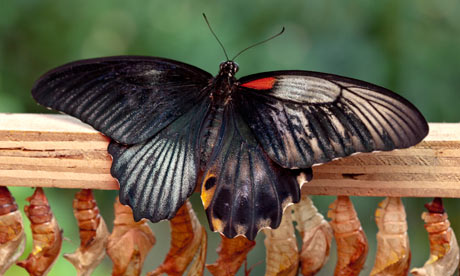
One little thing tripped my skeptical sensors and that is the quote at the end of the article taken from the curator of butterflies, Blanca Huertas. “The gynandromorph butterfly is a fascinating scientific phenomenon, and is the product of complex evolutionary processes. It is fantastic to have discovered one hatching on museum grounds, particularly as they are so rare.”
ٹھیک ہے, I don’t specifically see how these are a “product of … evolutionary processes” inasmuch as تمام life in تمام forms is a product of evolution. These are sterile “glitches” that are cool, but not anything that has been specifically evolved for or against. Perhaps it would be more adept to call this a fascinating process of genetics (which the article actually describes with accuracy). اس کے علاوہ – butterflies emerge as adults and hatch as caterpillars – but that’s just me being picky.
کرس Grinter کی طرف سے, on July 11th, 2011 Today’s moth is a beautiful and rare species from SE Arizona and Mexico: Lerina incarnata (Erebidae: Arctiinae). Like many other day flying species it is brilliantly colored and quite likely aposematic. After all, the host plant is a milkweed and the caterpillar is just as stunning (ذیل میں).
 Lerina incarnata (Erebidae: Arctiinae)
This image of an old, spread specimen hardly does the animal justice, but one lucky photographer found a female ovipositing at the very top of a hill outside of Tucson, ایریزونا. While you’re at it go check out some of Philip’s other great photographs on SmugMug.
 Lerina incarnata - Philip Kline, BugGuide As I mentioned above this moth also has an equally impressive caterpillar that feeds on Ascleapias linaria (pineneedle milkweed).
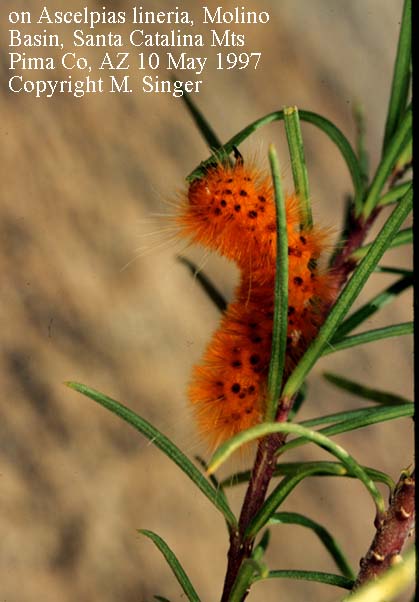
کرس Grinter کی طرف سے, جولائی 5th پر, 2011 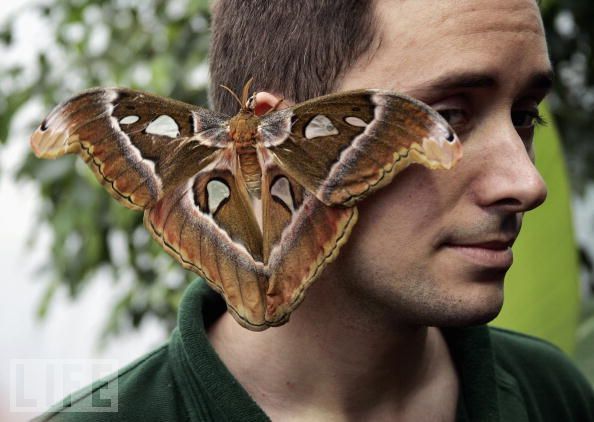
ہم سو جبکہ کیڑوں ہمارے چہرے میں داخلے شامل ہے کہ شہری کنودنتیوں میں سے ایک preponderance ہے ایسا لگتا ہے. سب سے زیادہ مشہور متک کے خطوط پر کچھ ہے “آپ کو کھانے 8 سوتے وقت ایک سال مکڑیاں“. اصل میں آپ نمبر سے رینج ہے کہ گوگل جب 4 سے 8… up to a pound? Not surprising things get so exaggerated online, especially when it concerns the ever so popular arachnophobia. I doubt the average American eats more than a few spiders over their entire lifetime; your home simply shouldn’t be crawling with so many spiders that they end up in your mouth every night! A similar myth is still a myth but with a grain of truth – that earwigs burrow into your brain at night to lay eggs. It isn’t true that earwigs are human parasites (thankfully), but they do have a predisposition to crawl into tight, damp places. It is possible that this was a frequent enough occurrence in Ye Olde England that the earwig earned this notorious name. Cockroaches have also been documented as ear-spelunkers – but any crawly insect that might be walking on us at night could conceivably end up in one of our orifices.
I have however never heard of a moth crawling into an ear until I came across this story today! I guess a confused Noctuid somehow ended up in this boy’s ear, although I can’t help but to wonder if he put it there himself… Moths aren’t usually landing on people while they are asleep nor are they that prone to find damp, tight spots. But then again anything is possible, some noctuids do crawl under bark or leaves in the daytime for safe hiding. I even came across another story of an ear-moth form the UK (not that the Daily Mail is a reputable source).
قدرتی طور پر, some lazy news sources are using file photos of “moths” instead of copying the photo from the original story. It’s extra hilarious because one of the pictures used is of a new species of moth described last year by Bruce Walsh in Arizona. Lithophane leeae has been featured on my blog twice before, but never like this!
On a closing note here is a poem by Robert Cording (also where the above image was found).
Consider this: a moth flies into a man’s ear
One ordinary evening of unnoticed pleasures.
When the moth beats its wings, all the winds
Of earth gather in his ear, roar like nothing
He has ever heard. He shakes and shakes
His head, has his wife dig deep into his ear
With a Q-tip, but the roar will not cease.
It seems as if all the doors and windows
Of his house have blown away at once—
The strange play of circumstances over which
He never had control, but which he could ignore
Until the evening disappeared as if he had
Never lived it. His body no longer
Seems his own; he screams in pain to drown
Out the wind inside his ear, and curses God,
Who, hours ago, was a benign generalization
In a world going along well enough.
On the way to the hospital, his wife stops
The car, tells her husband to get out,
To sit in the grass. There are no car lights,
No streetlights, no moon. She takes
A flashlight from the glove compartment
And holds it beside his ear and, unbelievably,
The moth flies towards the light. His eyes
Are wet. He feels as if he’s suddenly a pilgrim
On the shore of an unexpected world.
When he lies back in the grass, he is a boy
دوبارہ. His wife is shining the flashlight
Into the sky and there is only the silence
He has never heard, and the small road
Of light going somewhere he has never been.
– Robert Cording, Common Life: Poems (Fort Lee: CavanKerry Press, 2006), 29–30.
کرس Grinter کی طرف سے, 30 جون کو, 2011 
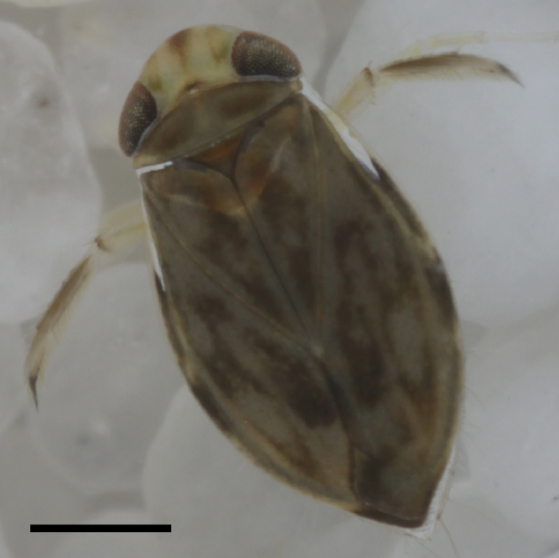 مائیکرونیکٹا سکولزی یوروپی دیہی علاقوں کی پہاڑیاں محبتوں کی آواز میں زندہ ہیں۔, چیخنا, نر آبی کیڑے. اوپر چھوٹا کیڑا, مائیکرونیکٹا سکولزی (Corixidae), ایک مکمل 2.3 ملی میٹر میں پیمائش کرتا ہے اور پھر بھی آسانی سے کلک کرنے / گونجنے والی آواز پیدا کرتا ہے۔ انسان کے لئے قابل سماعت کان پانی کی سطح کے اوپر. اس کو تناظر میں رکھنے کے لیے: تالاب کے کنارے کھڑے ہو کر پانی کے اندر کسی کی بات کرنے کی کوشش کرنا تقریباً ناممکن ہے۔, پھر بھی اس لمحے کیڑے اتنی بلند آواز میں ایک کلک پیدا کرتا ہے کہ اسے زمینی آرتھروپوڈ سمجھ لیا جائے. جب کہ یہ زیادہ متاثر کن نہیں لگتا جب ہم دوسرے بلند آواز والے کیڑوں جیسے سیکاڈا سے گھرے ہوتے ہیں۔, ایم. سکولزی جب آپ جسم کے سائز اور درمیانے درجے پر غور کرتے ہیں تو یہ ایک حیرت انگیز طور پر بلند آواز والا جانور ثابت ہوتا ہے جس سے آواز ہمارے کان تک پہنچ رہی ہے۔. پانی کے اندر کلکس کی شدت کو ان نمبروں میں ڈالیں جس تک پہنچ سکتی ہے۔ 100 ڈی بی (صوتی دباؤ کی سطح, ایس پی ایل). ہمیں کیڑوں کی دنیا میں سکڑیں اور یہ آواز کی پیداوار a کے برابر ہے۔ ایک ہی فاصلے پر jackhammer! تو زمین پر کس چیز نے اس چھوٹے سے کیڑے کو یہ شور مچانے اور شکاریوں سے بھری دنیا میں اس کے ساتھ بھاگنے کی اجازت دی ہے?
مصنفین قدرتی طور پر بتاتے ہیں کہ یہ نتائج کتنے حیران کن ہیں۔. پہلی چیز جو ظاہر ہوتی ہے وہ یہ ہے کہ پانی کے کشتی والوں کے پاس کوئی سننے والا شکاری نہیں ہونا چاہیے کیونکہ وہ بنیادی طور پر تیراکی کرتے ہیں اور کسی بھی چھوٹے جانور کے لیے جسمانی طور پر زیادہ سے زیادہ شور مچاتے ہیں۔. واقعی یہ زیادہ حیران کن نہیں ہے کیونکہ زیادہ تر پانی کے اندر شکاری سختی سے بصری شکاری ہوتے ہیں (ڈریگن فلائی لاروا, پانی کے کیڑے اور چقندر وغیرہ…). یہ بہت ممکن ہے کہ جنسی انتخاب نے ان سخت کالوں کی ترقی کو اس قدر حیران کن سطحوں تک پہنچایا ہو۔. دوسری سب سے حیران کن بات واضح ہو جاتی ہے جب آپ گراف کرتے ہیں کہ یہ کیڑے اپنے جسم کے سائز کے لحاظ سے کتنی بلند آواز میں ہیں۔. گراف کے اوپری حصے میں بوتل نوز ڈالفن ہے۔ (ٹی. truncatus) اس کے مشہور سونار کے ساتھ. لیکن سب سے بڑا اوٹلیر دراصل ہمارا چھوٹا سا کیڑا ہے جو نیچے بائیں طرف آواز اور جسم کے سائز کے درمیان بہت زیادہ تناسب کے ساتھ ہے۔ (31.5 کے ایک مطلب کے ساتھ 6.9). کوئی اور جانا پہچانا جانور قریب نہیں آتا. یہ امکان ہے کہ دوسرے آبی حشرات کے مزید امتحان سے اگر زیادہ حیران کن نتائج نہ نکلیں تو اسی طرح کا نتیجہ نکل سکتا ہے۔!

کے بارے میں زیادہ درست ہونا “چیخنا”, کیڑے (اس مثال میں کیڑے درست ہیں۔; Corixidae کا تعلق Hemiptera آرڈر سے ہے۔ – حقیقی کیڑے) مشکل ہونے کا امکان ہے – ہوا کو باہر نکالنے کے بجائے آواز پیدا کرنے کے لیے دو حصوں کو آپس میں رگڑنا, ڈھول بجانا, وغیرہ… مضمون میں مصنفین کا قیاس ہے کہ “آواز دائیں پیرامیر پر پارس اسٹریڈین کو رگڑنے سے پیدا ہوتی ہے۔ (جننانگ اپینڈیج) پیٹ کے آٹھویں حصے کے بائیں لاب پر ایک رج کے خلاف [15]”. ان کا حوالہ کھینچے بغیر, ایسا معلوم ہوتا ہے کہ جینس میں مردوں کی طرف سے تنگی کو ساتھی کی کشش کے لیے اچھی طرح سے دستاویز کیا گیا ہے۔. اور جیسا کہ آپ توقع کریں گے۔, خبر رساں ادارے اور سائنس صحافی پڑھتے ہیں۔ “جننانگ اپینڈیج” اور اس کا عضو تناسل میں ترجمہ کریں۔: اور آپ کہانیوں کے ساتھ ختم ہوتے ہیں۔ اس طرح. پیرامیرز کے فنکشن کا ڈھیلے طریقے سے مینڈیبلز کی طرح ترجمہ کیا جا سکتا ہے کہ وہ ساخت کے مخالف ہیں۔ (عام طور پر بالوں سے لیس) پکڑنے کے لیے. دی ان کا صحیح استعمال مختلف ہو سکتا ہے پرجاتیوں یا یہاں تک کہ احکامات کے ذریعہ, لیکن وہ عضو تناسل کی شکل میں بہت الگ ہیں۔ (= aedeagus) چونکہ وہ صرف ملاوٹ کو آسان بنانے میں مدد کرتے ہیں اور کوئی سپرم نہیں پہنچاتے ہیں۔. تو حقیقت میں آپ کے پاس جننانگ ہے۔ “claspers” کے ساتھ “چیخنے والا حصہ”. اور پارس اسٹریڈینز کی بہترین مثال ختم ہو چکی ہے۔ پرانا بلاگ آرکیٹائپ. اس ڈھانچے کو نیچے پیلے رنگ میں نمایاں کیا گیا ہے۔ (اور چیونٹی کے پیٹ پر موجود ہوتا ہے۔). لیکن مختصر میں – یہ واش بورڈ کی طرح ایک باقاعدہ نالی والی سطح ہے۔. آخر میں مذکورہ جملہ کا ترجمہ کرنا چاہیے۔ “پیٹ کے سرے پر دو ڈھانچے جو ایک ساتھ رگڑتے ہیں جیسے دو انگلیاں پھٹ رہی ہوں۔”.
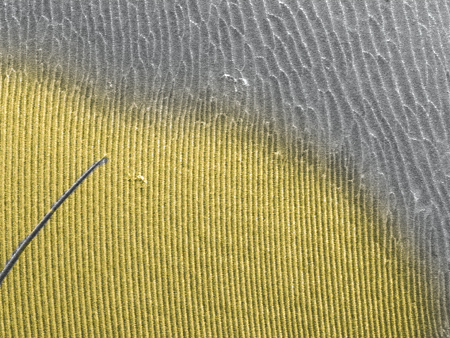 پارس اسٹریڈینز کی تفصیل (پیلے رنگ میں) پچی کونڈیلا ولوسا ورکر میں پیٹ کے چوتھے حصے پر (الیکٹران مائیکرو گراف اسکین کرنا, رابرٹو کیلر / اے ایم این ایچ) Continue reading The incredibly loud world of bug sex
کرس Grinter کی طرف سے, on June 20th, 2011 I’m going to keep the ball rolling with this series and try to make it more regular. I will also focus on highlighting a new species each week from the massive collections here at the California Academy of Sciences. This should give me enough material for… at least a few hundred years.
 Grammia edwardsii (Erebidae: Arctiinae) This week’s specimen is the tiger moth Grammia edwardsii. Up until a few years ago this family of moths was considered separate from the Noctuidae – but recent molecular and morphological analysis shows that it is in fact a Noctuid. The family Erebidae was pulled out from within the Noctuidae and the Arctiidae were placed therein, turning them into the subfamily Arctiinae. OK boring taxonomy out of the way – all in all, it’s a beautiful moth and almost nothing is known about it. This specimen was collected in San Francisco in 1904 – in fact almost all specimens known of this species were collected in the city around the turn of the century. While this moth looks very similar to the abundant and widespread Grammia ornata, close analysis of the eyes, wing shape and antennae maintain that this is actually a separate species. I believe the last specimen was collected around the 1920’s and it hasn’t been seen since. It is likely and unfortunate that this moth may have become extinct over the course of the last 100 years of development of the SF Bay region. Grammia, and Arctiinae in general, are not known for high levels of host specificity; they tend to be like little cows and feed on almost anything in their path. So it remains puzzling why this moth wouldn’t have habitat today, even in a city so heavily disturbed. Perhaps this moth specialized in the salt marsh areas surrounding the bay – which have all since been wiped out due to landfill for real-estate (1/3 of the entire bay was lost to fill). Or perhaps this moth remains with us even today but is never collected because it is an evasive day flying species. I always keep my eye out in the park in spring for a small orange blur…
|
شکوک و شبہات
|














